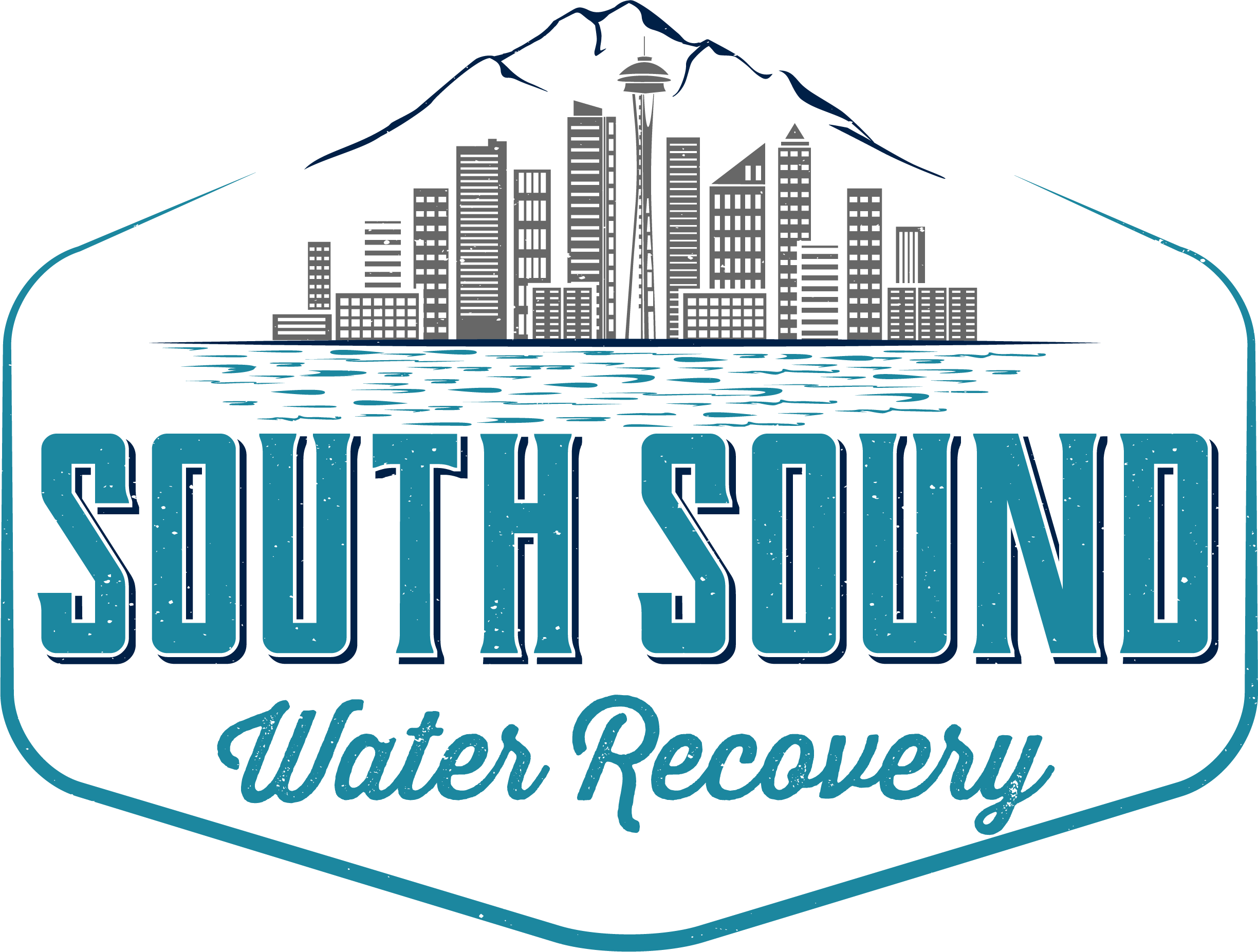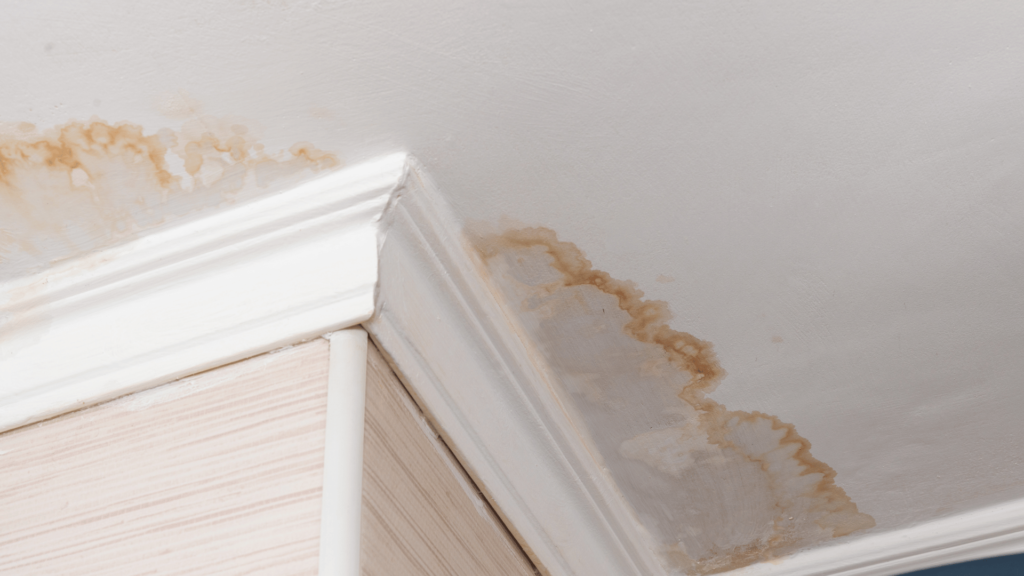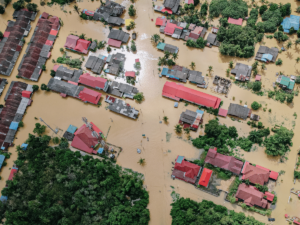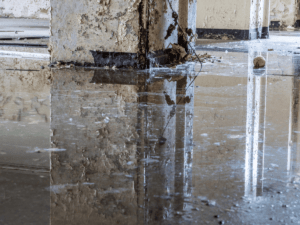Understanding the Causes of Ceiling Water Damage
Ceiling water damage can be a homeowner’s nightmare, but understanding its root causes is essential for prevention and timely intervention. In this section, we’ll explore some common reasons why your ceiling might be susceptible to water damage.
Roof Leaks
One of the primary culprits behind ceiling water damage is a leaking roof. Roof leaks can occur due to damaged or missing shingles, deteriorated flashing, or poor roof installation. When it rains, water can penetrate through these vulnerable points, saturating your attic and eventually seeping down to your ceiling.
Plumbing Issues
Faulty plumbing, such as leaking pipes, burst water lines, or damaged plumbing fixtures, can lead to water infiltrating your ceiling. These issues often go unnoticed until you observe stains or water spots on your ceiling, making it crucial to address plumbing problems promptly.
HVAC System Condensation
Your home’s heating, ventilation, and air conditioning (HVAC) system can also contribute to ceiling water damage. If your HVAC system isn’t adequately insulated or if there’s a malfunction that causes condensation to form on ductwork or components, it can result in water dripping onto your ceiling.
Blocked Gutters and Downspouts
Clogged or improperly maintained gutters and downspouts can lead to water overflow during heavy rainfall. When water spills over the sides of the gutters, it can saturate the exterior walls of your home, eventually finding its way into your ceiling. Regular gutter cleaning and maintenance are essential to prevent this issue.
Bathroom and Kitchen Leaks
Ceiling water damage can also originate from bathrooms and kitchens. Leaks from plumbing fixtures, such as toilets, sinks, or dishwashers, can travel through floor and ceiling joists, causing water damage to the ceilings below. Be vigilant for any signs of water leakage in these areas.
Window and Door Seal Failures
Inadequate sealing around windows and doors can allow rainwater to infiltrate your home. Over time, this moisture can lead to ceiling water damage. Properly sealing and maintaining your windows and doors can help prevent this type of water intrusion.
Recognizing the Signs of Ceiling Water Damage
Identifying ceiling water damage early is crucial to prevent further deterioration and costly repairs. Here are some key signs to watch out for:
Water Stains
Water stains on your ceiling are a clear indicator of water damage. They often appear as discolored patches, typically yellow or brown, and can vary in size and shape. Water stains indicate that moisture has penetrated the ceiling material, and it’s essential to address the source promptly.
Peeling or Bubbling Paint
If you notice your ceiling paint peeling or forming bubbles, it may be due to moisture trapped underneath the paint layer. This is a common consequence of water damage and should be investigated further.
Sagging or Warping
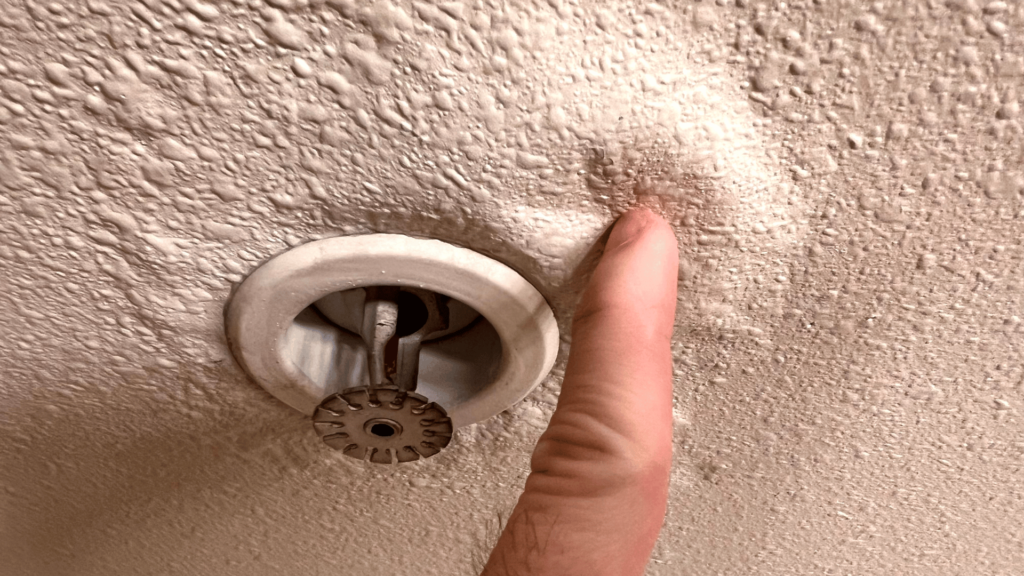
Ceiling materials like drywall or plaster can lose their structural integrity when exposed to water. If you see any areas of your ceiling sagging or warping, it’s a strong indication of water damage. These compromised sections can eventually collapse if left untreated.
Mold and Mildew Growth
Water-damaged ceilings create the perfect environment for mold and mildew growth. If you notice black or greenish spots on your ceiling, especially in combination with a musty odor, it’s essential to address both the water damage and mold issues promptly. Mold can pose health risks and further damage your home.
Dripping or Pooled Water
In more severe cases, you may actually observe water dripping or pooling on your ceiling. This indicates an active and ongoing leak that requires immediate attention to prevent further damage.
Cracked or Peeling Drywall
Ceiling drywall can become weakened and start to crack or peel when exposed to prolonged moisture. If you notice these signs, it’s essential to investigate the cause and take corrective action.
Soft Spots or Disintegration
Gently press on your ceiling with your fingertips. If you feel any areas that are soft or seem to disintegrate upon touch, it’s a sign of severe water damage, and the affected material may need to be replaced.
Unpleasant Odors
A musty or damp odor in your home, especially in the vicinity of the ceiling, can be an early indicator of hidden water damage. Investigate the source of the odor to identify any underlying issues.
Recognizing these signs of ceiling water damage can help you act swiftly to address the problem.
Immediate Steps to Take When You Discover Water Damage

Discovering water damage on your ceiling can be a stressful experience, but taking swift action is crucial to minimize the extent of the damage and prevent potential health hazards. Here are the immediate steps you should take when you detect water damage:
Safety First
Before addressing the water damage, ensure the safety of yourself and your family. If you notice sagging or compromised portions of the ceiling, avoid standing or walking beneath them, as they could collapse. Additionally, if water is actively dripping or pooling, be cautious to avoid electrical hazards.
Identify and Stop the Source
Determine the source of the water intrusion and take steps to stop it. In some cases, this may involve temporarily turning off your home’s water supply if the leak is plumbing-related. For roof leaks, consider using tarps or buckets to collect the water and divert it away from the affected area.
Document the Damage
Take clear and detailed photographs or videos of the water-damaged areas. Documenting the damage will be essential when filing insurance claims and can serve as evidence for future reference.
Remove Water and Moisture
If there is standing water on your ceiling, carefully remove it using buckets, towels, or a wet-dry vacuum. Next, use fans and dehumidifiers to dry out the affected area and prevent further moisture-related issues like mold growth.
Address Mold and Mildew
If you notice any signs of mold or mildew growth, take action immediately. Wear protective gear, including a mask and gloves, and use a mixture of water and mild detergent to clean the affected areas. Consult a professional mold remediation service if the problem is extensive.
Consult a Professional
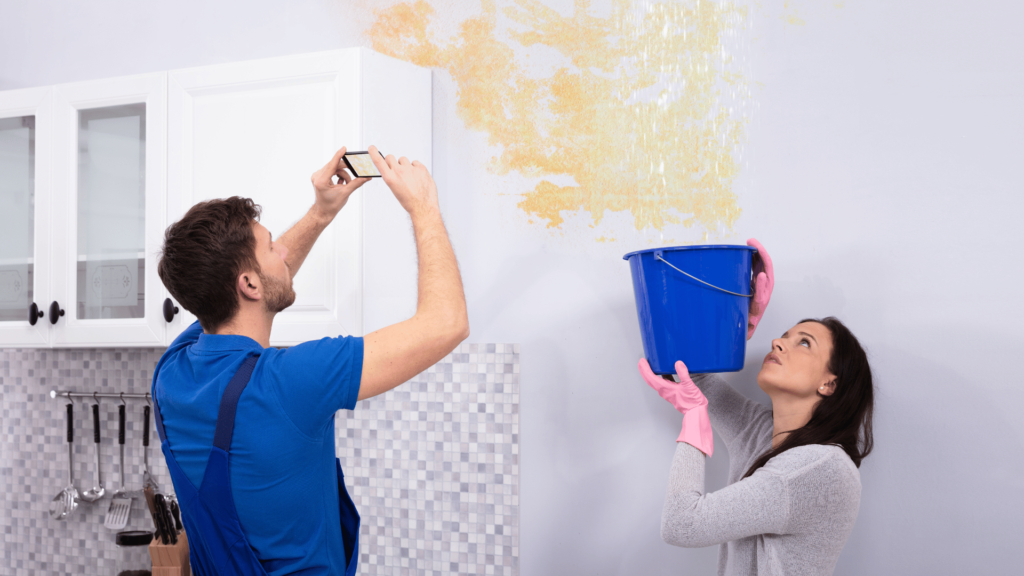
For more severe or extensive ceiling water damage, it’s advisable to seek professional help. A water damage restoration specialist can assess the situation, provide proper drying and restoration services, and address any structural damages.
Contact Your Insurance Company
If your homeowner’s insurance policy covers water damage, contact your insurance company to report the incident and initiate the claims process. Provide them with the documentation you collected and follow their guidance on how to proceed.
Prevent Future Water Damage
Once the immediate issues are addressed, take steps to prevent future water damage. This may involve repairing the source of the leak, inspecting and maintaining your roof and plumbing systems regularly, and improving ventilation in areas prone to moisture buildup.
Consult with a Contractor
After the damage is assessed and the area is thoroughly dried, consult with a water damage restoration company to repair the ceiling to its pre-damaged condition. Depending on the severity of the damage, this may involve replacing damaged materials, such as drywall or insulation.
Taking these immediate steps when you discover water damage on your ceiling can help mitigate the impact and ensure the safety and well-being of your home and family.
